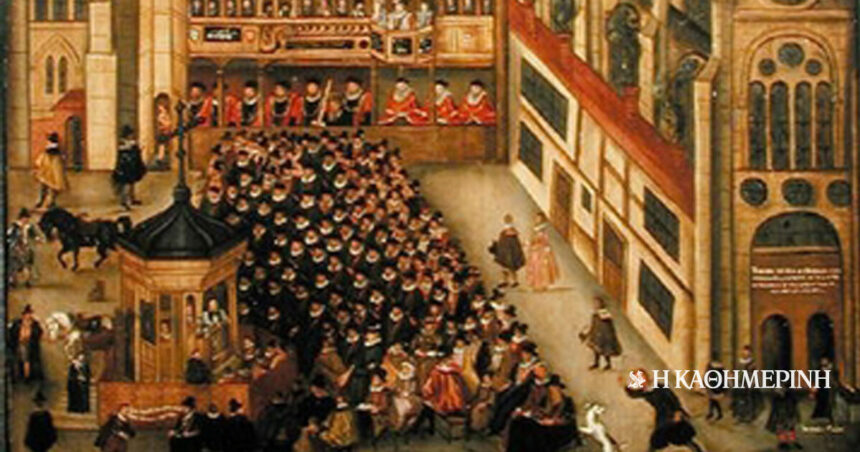Unlike the rest of Europe, the Church Reformation in England started after the Church’s conflict with King Henry VIII. This is not to say that the English Reformation was exclusively a political movement. Henry could not have succeeded in establishing an independent Church in England, had he not had the support of a large portion of his subjects, who felt cut off from Rome.
Henry VIII ascended the English throne in 1509 and in the same year married Catherine of Aragon, with whom he had a daughter, Mary. In 1527, however, he addressed Pope Clement VII with a request for the annulment of his marriage, as he wished to have a male heirwho would perpetuate the Tudor dynasty in England. Being in a difficult position, the pope chose to postpone his decision. On the one hand he was in danger of losing England to him Catholicismif he rejected Henry’s request. On the other hand, he was in danger of being stripped of his secular powers, as Charles V, Catherine’s nephew, had already invaded Italy with his troops.
Henry forced the clergy to recognize him as head of the Church of England.
In 1531, Henry decided to solve the problem he was facing himself. He called an assembly of the clergy, and by the threat of punishment, compelled the clergy to recognize him as the head of the English church. He then persuaded Parliament to pass a series of laws, which confirmed the independence of the Anglican Church.
However, the legislation that was implemented did not make England a Protestant country, although the number of supporters of Luther and Calvin increased over the years. The accession to the throne of Henry VIII’s eldest daughter, Mary (1553-1558), did not ultimately reverse the religious course of England independent of Rome. It turned out that the majority of English people did not wish neither a Protestant revolution in the country nor a return to the spiritual jurisdiction of Romesomething the monarch sought to achieve.
Although the Church became Protestant, some articles of faith were left vague to include Catholics.
Mary’s successor and half-sister, Elizabeth I (1558-1603), largely determined the status of the Anglican Church. Shortly after her return to the throne, she ordered the drafting of the “Act of Supremacy”, according to which the monarch of England became the supreme ruler of the independent Anglican Church. Although the church became Protestant, certain articles of faith were left vague, in order to include Catholics without remorse. Also, some typical features of the Catholic Church were preserved, such as the episcopal form of organization.
On January 16, 1581, the English Parliament voted to “An Act for Maintaining the Subjection of Subjects to the Queen”, who outlawed Catholicism. He imposed restrictions on the practice of the Catholic religion, marginalizing the country’s Catholics. The passing of the Act was a tool of Elizabeth’s to ensure domestic stability. The Catholics were targeted by the political leadership after the failure of the Spanish to invade Britain, with the accusation of traitors to the country.
Column editor: Myrto Katsigera, Vassilis Minakakis, Antigone-Despoina Poimenidou, Athanasios Syroplakis




